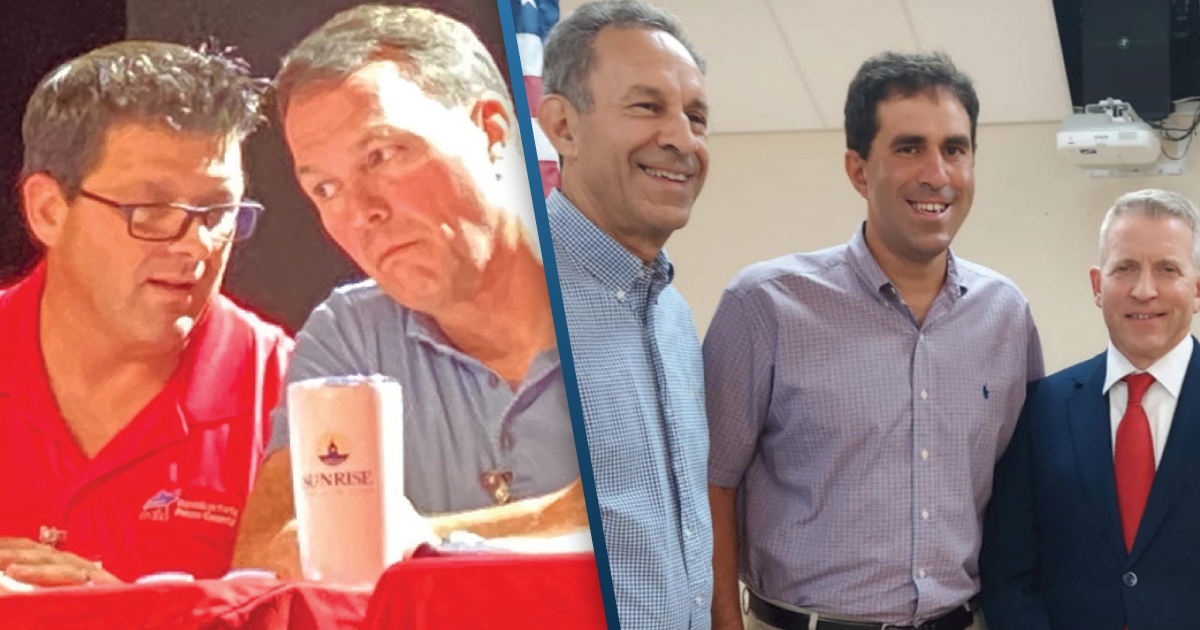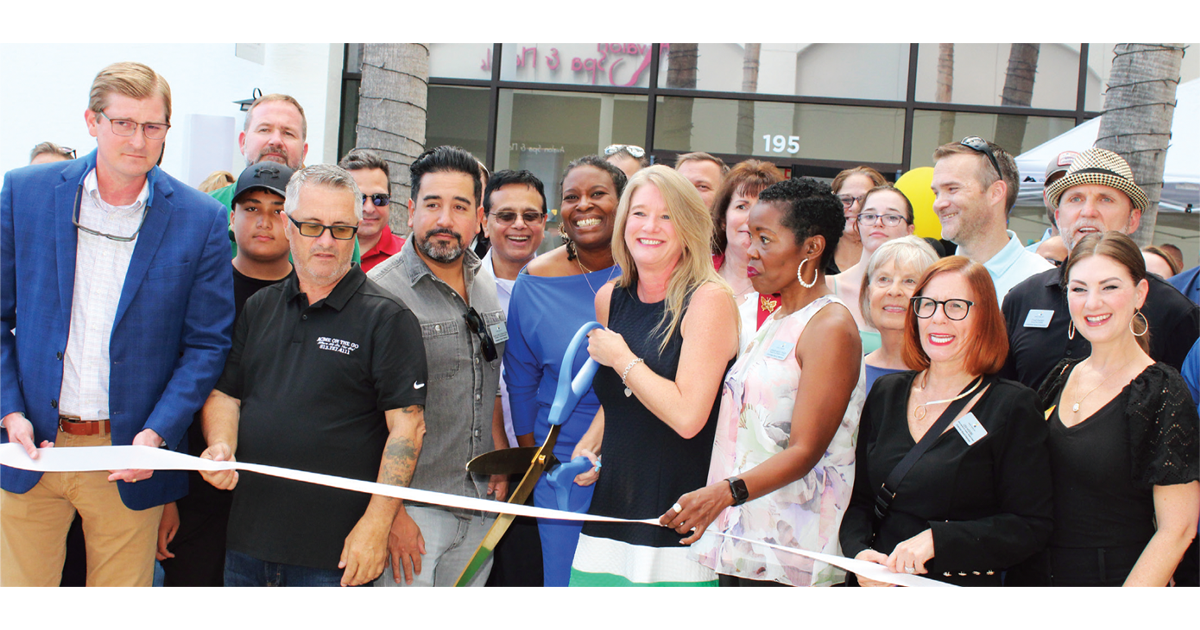
Jim Cracchiolo has been the president of the Wesley Chapel Republlican Club (WCRC) since its founding a decade ago. During the last few years, Cracchiolo’s son Peter has been lining up guest speakers for the club’s meetings that have included many of the heaviest Republican hitters in the county and state. Peter currently is serving as the club’s vice president.
There’s only one problem — as of May 13, the WCRC no longer has a charter/stamp of approval from the Republican Party of Pasco’s Executive Committee (Pasco REC).
Individual Pasco Republican clubs, like the WCRC, which provide support for their party — which has dominated Pasco’s political elections for decades — have to renew their charters with the Pasco REC every year.
So, why was the WCRC’s charter not renewed? Cracchiolo, Pasco County’’s publicly elected Republican State Committeeman Shawn Foster and Pasco REC chair Troy Stevenson all agree that the reason the club’s charter was not renewed this year was because Peter Cracchiolo volunteered and/or worked for former Hillsborough State Attorney and 2024 Democratic candidate to win his job back Andrew Warren (who was removed from office by Florida Gov. Ron DeSantis) and District 1 School Board member Nadia Combs, a known Democrat whom DeSantis sought to replace with known conservative Republican Layla Collins (the wife of Republican State Sen. Jay Collins), even though School Board elections are non-partisan.
“The Wesley Chapel Republican Club had a gentleman that was working for independents and Democrats and getting paid and volunteering [for them],” Foster said during the June 19 Pasco REC meeting attended by about 100 people at Grace Family Church on S.R. 54 in Lutz, where Dist. 2 Commissioner Seth Weightman was the featured speaker. “Several people have had to be removed and asked to leave [the Pasco REC] because they endorsed or supported independents and Democrats against Republicans in the general election.”
He added, “We can’t do that as members [of the REC]. We agree here by signing an oath. We have tried to work with the [WCRC] for nearly a year about this and we tried to suggest to just take that person and put them in another position, [because] they could not be in an administrative position of the club if they were going to work for Democrats or independents. We’re here for the Republican Party of Pasco. We’re here to get Republicans elected.”
But, Cracchiolo says that working to get Republicans elected is exactly what the WCRC has done since its inception. And, even though Peter has helped some non-Republican campaigns, “He has done an amazing job of getting our speakers for us,” Cracchiolo says. He is a registered Republican and a strong supporter of the Republican party and our entire club believes he should not have to be removed from our Board.”
Even so, Cracchiolo received a Cease & Desist letter from Benjamin J. Gibson of the Law Firm of Shutts & Bowen, LLC, the attorney for the Republican Party of Florida (RPOF) on May 13 that says,
“On behalf of the RPOF, we write to demand that you immediately cease and desist your unauthorized usage of the Republican name in association with your organization ‘Wesley Chapel Republican Club,’ including your operation of the Facebook page available at Facebook.com.
Because your club’s charter was not renewed by RPOF, your use of the Republican name in the title of your organization and on Facebook is now without approval, permission or authorization of the RPOF.
Florida law is clear that a political party’s name, abbreviation, or symbol may not be used in connection with any club, group, association, or organization of any kind ‘unless approval and permission have been given in writing by the state executive committee of such party.’

§ 103.081(2). Section 103.081(2) states:
(2) No person or group of persons shall use the name, abbreviation, or symbol of any political party, the name, abbreviation, or symbol of which is filed with the Department of State, in connection with any club, group, association, or organization of any kind unless approval and permission have been given in writing by the state executive committee of such party.”
Cracchiolo says that his club is not backing down. On May 21, Cracchiolo responded to Gibson’s Cease & Desist letter as follows:
“We decline to comply with RPOF’s demand, for the reasons outlined below:
1. Descriptive Use of ‘Republican’ and Legal Authority. The word ‘Republican’ is merely descriptive and not available for registration or common law right of exclusive use. The Club’s use of the word “Republican” is made solely in a descriptive and expressive capacity, to identify the general political viewpoint of its members and the nature of our discussions and events. The Club does not claim to be affiliated with, endorsed by, or authorized by the RPOF or the Republican National Committee. This usage is protected under well-established First Amendment principles and the doctrine of nominative fair use. The use of such political identifiers by grassroots, unaffiliated community groups is a long-standing and widely accepted practice.
With respect to your citation, and misplaced analysis, of Florida law, the operative text in FL. Statute §103.082 (2) is ‘No person or group of persons shall use the name, abbreviation, or symbol of any political party, the name, abbreviation, or symbol of which is filed with the Department of State.’ As to the name, the restriction relates to the ‘Party’ name designation filed with the state. For example, the state party is the “Republican Party of Florida” (RPOF as we routinely refer to it) and is filed with the state. The term ‘Republican’ standing alone is not a party, and our club has made clear that it is not affiliated with the GOP, RNC, Florida or county Republican Party (each of which having their own distinctive name and symbol); but instead, is an independent organization and club for individual members of the public who personally identify as a Republican.”
Editor’s note – I only became aware of this situation because Jannah and I attended the June 12 WCRC meeting hoping to hear District 4 Pasco Commissioner Lisa Yeager speak, but when Yeager cancelled that appearance the same day, Cracchiolo brought an update on the battle to the more than 50 attendees. I told Cracchiolo that I would try to talk to both Foster and Stevenson at the Pasco REC meeting the following week to try to help iron out a solution, but both sides are standing firm.
So, the WCRC is still planning to continue to use the name “Republican” without a charter and the Pasco REC is deciding what to do next.
But, as Foster said at the Pasco REC meeting “This was not not the way I wanted it to be resolved, but I have a clear conscience.”
















